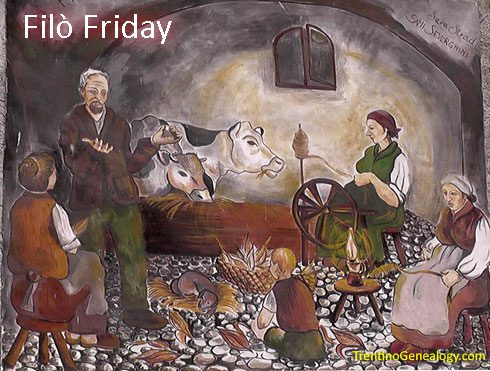 Presented by genealogist Lynn Serafinn, FILO’ FRIDAY is a series of weekly video podcasts on the rich history, culture and genealogy of the people of Trentino in present-day northern Italy.
Presented by genealogist Lynn Serafinn, FILO’ FRIDAY is a series of weekly video podcasts on the rich history, culture and genealogy of the people of Trentino in present-day northern Italy.
‘Filo’ is a traditional practice of storytelling in rural Trentino. It was done in the evenings, between dinner and bedtime. The storytellers were often the heads of the households. Its purpose was to bring families together, preserve oral family history, share local legends and fables, and provide entertainment. The word is derived from the verb for ‘spinning’ because this was traditionally the time when women would spin various yarns for cloth. But it also has a double meaning in that the storyteller was spinning a tale.
Catch up on the latest podcasts below. To participate in the discussion during the LIVE podcasts, come join us at https://facebook.com/groups/TrentinoGenealogy .
[huge_it_videogallery id=”3″]
